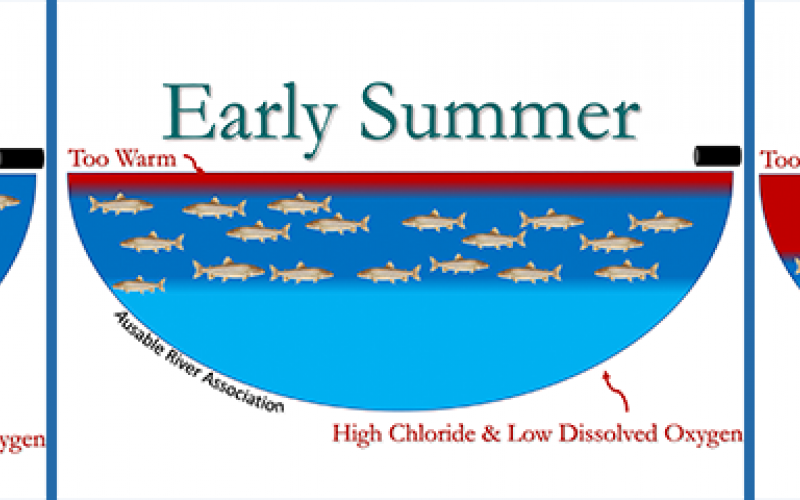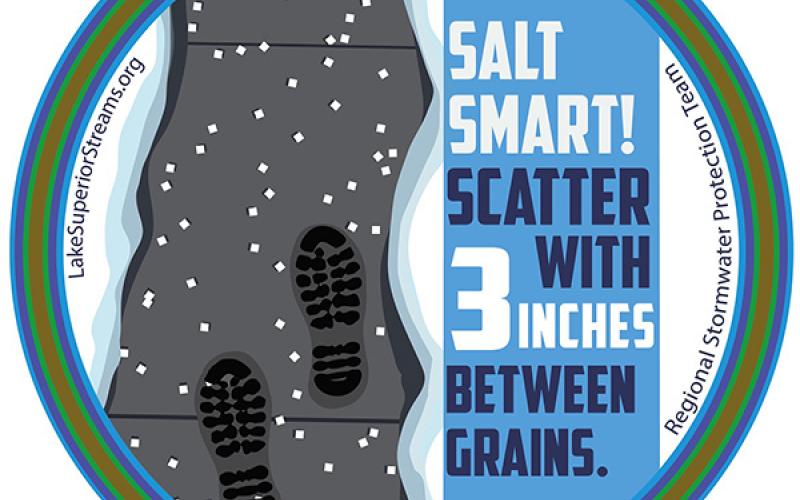
Water You Know About Road Salt
Winter is once again upon us here in Vermont and the Lake Champlain basin. One of the most impactful things we can do in winter to help keep our lakes, streams, and groundwater clean is to reduce the amount of salt we use on our sidewalks, driveways, and parking lots. Salt, most commonly sodium chloride, that we spread on these surfaces helps to keep us safe, but once it is on the land, it can negatively impact water quality, vegetation, fish, and other aquatic life.
For instance, in Lake Placid, New York, as a result of winter salting, Mirror Lake has developed a long-lasting zone at the bottom of the lake that has little to no oxygen (anoxic). This changes natural lake processes and forces fish into a narrow band of lake water in summer months as oxygen levels decrease in warming waters above and remain anoxic below.

In New York, Massachusetts, and New Hampshire, drinking water wells have become contaminated as a result of road salting, putting people’s health at risk and causing homeowners and communities stress, time, and expense for decontamination. To reduce the chance of this happening in Vermont, we need to be careful about our actions regarding winter salting.
Before sharing some simple steps you can take to minimize salt use and still keep yourself and your family safe in winter, let’s talk about how sodium chloride works to protect us. When we spread sodium chloride on our walkways and driveways, it mixes with water and breaks into its individual components, called ions, which are sodium and chloride.
These ions then act like referees in a hockey game preventing fights between players; that is, the sodium and chloride ions get in between water molecules that are trying to join together to form ice crystals, inhibiting them from joining. The jostling for position of the sodium and chloride ions between water molecules decreases the freezing point of water and minimizes ice formation.

Where you do spread salt, use no more than a cup or a cup and a half of rock salt for every 10 sidewalk squares or every two parking spaces. There should be about 3 inches between each of the salt grains after you have spread it.
If you work with a contractor, you can ask them to salt only in critical areas or to spread a pre-mixed salt-water solution ahead of storms. The salt-water solution acts like butter in a frying pan, reducing the ability of snow and ice to bond with the surface. It can reduce salt use and eases the ability to plow or shovel after the storm. Plus, since any dry salt you spread must combine with water to minimize ice formation, it can work its magic more quickly than if you spread dry salt.
These steps you take at home and in communication with your contractor can help prevent contamination of surface and groundwater, keeping waters safe for today and the future.
Adapted from Kris Stepenuck's story "Keeping Water Healthy and Roads Safe in Winter" published in the Other Paper, January 21, 2021